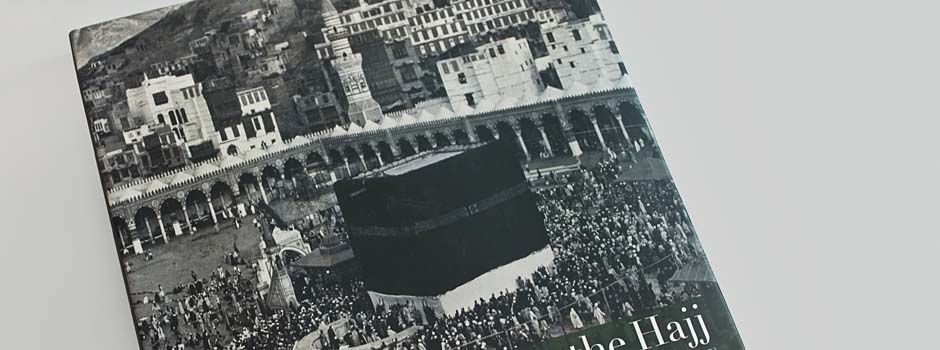
A Photographer on the Hajj, The Travels of Muhammad ‘Ali Effendi Sa’udi (1904/1908)
May 08, 2011 Book Review

His story of these journeys combines the thoughts of a devout Muslim with fine detail on the hardships and health hazards facing pilgrims, the high-level intrigues, and the ever-present dangers of taking photographs. The authors Farid Kioumgi and Robert Grahamhave compressed the diaries into a highly readable narrative with selected quotations, lavishly illustrated with Sa‘udi’s remarkable photographs.
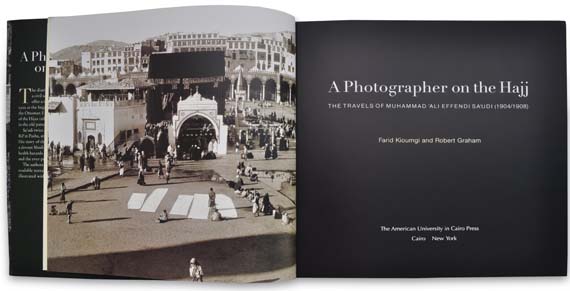 Photo: A Photographer on the Hajj, The Travels of Muhammad ‘Ali Effendi Sa’udi (1904/1908) / Image: Islamic Arts Magazine
Photo: A Photographer on the Hajj, The Travels of Muhammad ‘Ali Effendi Sa’udi (1904/1908) / Image: Islamic Arts Magazine
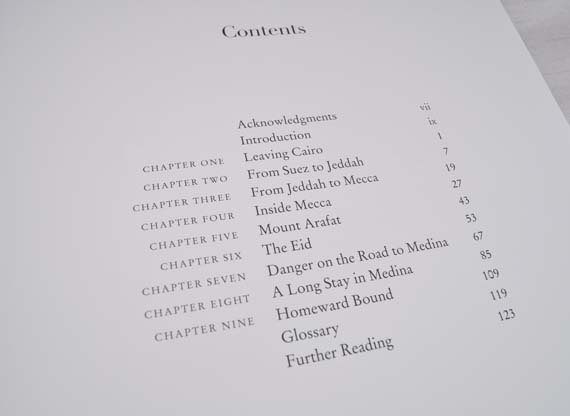 Photo: Contents of the book / Image: Islamic Arts Magazine
Photo: Contents of the book / Image: Islamic Arts Magazine
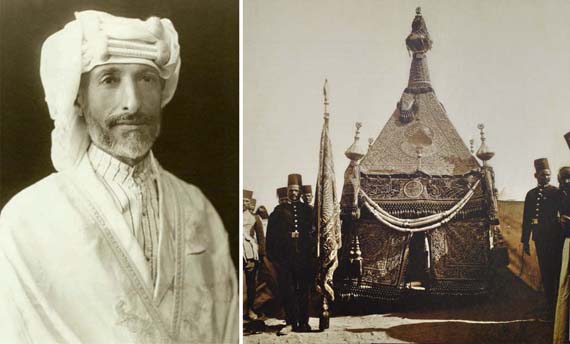 Photo left: Sa’udi dressed as a citizen of Medina, which meant he was not subjected to the restrictions on movement imposed on pilgrims because of the threat of the cholera / Image: Islamic Arts Magazine
Photo right: The mahmal ready to leave Cairo. This palanquin symbolized the authority of the Egyptian pilgrim caravan and was paraded through the streets of Cairo with great pomp. The elaborate gold-embroidered cover was handmade at Dar al-Kiswa in Cairo and renewed annually / Image: Islamic Arts Magazine
Photo left: Sa’udi dressed as a citizen of Medina, which meant he was not subjected to the restrictions on movement imposed on pilgrims because of the threat of the cholera / Image: Islamic Arts Magazine
Photo right: The mahmal ready to leave Cairo. This palanquin symbolized the authority of the Egyptian pilgrim caravan and was paraded through the streets of Cairo with great pomp. The elaborate gold-embroidered cover was handmade at Dar al-Kiswa in Cairo and renewed annually / Image: Islamic Arts Magazine
 Photo: A camel driver escorting one of Sa’udi’s pack camels carrying a wooden box with his valuables. On several occasions over rough terrain this fell, causing stereoscope glass slides like this to be damaged / Image: Islamic Arts Magazine
Photo: A camel driver escorting one of Sa’udi’s pack camels carrying a wooden box with his valuables. On several occasions over rough terrain this fell, causing stereoscope glass slides like this to be damaged / Image: Islamic Arts Magazine
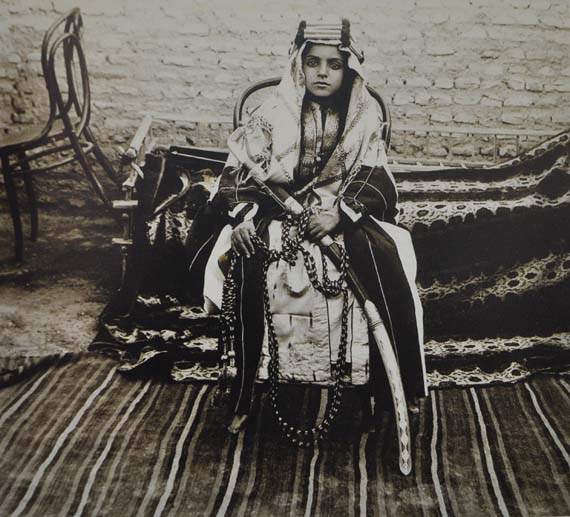 Photo: Amir bin ‘Abd al-‘Aziz al-Rashid aged ten in the family’s Medina house, wearing his full tribal regalia including the display of a sword to demonstrate that he was already being instructed as a warrior. He was assassinated ten years later by a cousin / Image: Islamic Arts Magazine
Photo: Amir bin ‘Abd al-‘Aziz al-Rashid aged ten in the family’s Medina house, wearing his full tribal regalia including the display of a sword to demonstrate that he was already being instructed as a warrior. He was assassinated ten years later by a cousin / Image: Islamic Arts Magazine
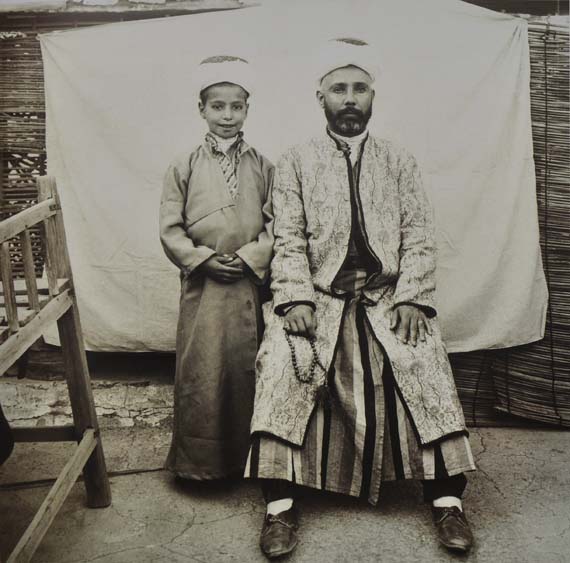 Photo: The Imam who led the Friday prayer at the Great Mosque in Medina, accompanied by his eldest son / Image: Islamic Arts Magazine
Photo: The Imam who led the Friday prayer at the Great Mosque in Medina, accompanied by his eldest son / Image: Islamic Arts Magazine
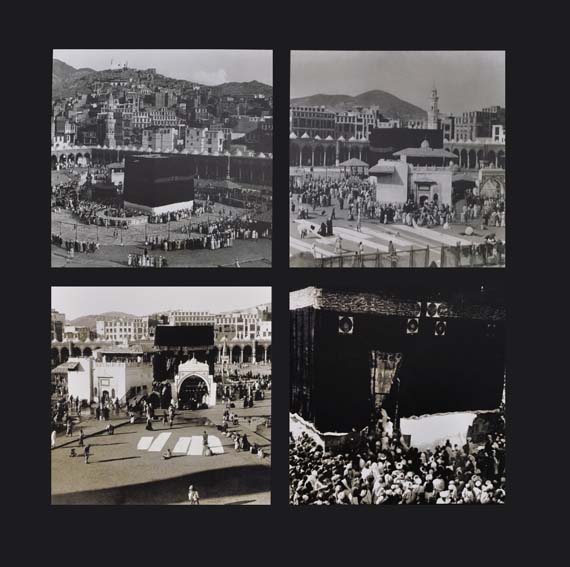 Photos - clockwise from top left:
1. Pilgrims performing the tawaf, circumambulation of the Ka’ba.
2. Pigrims wait in line to drink water from the Zam Zam well.
3. Pilgrims performing the ritual touching of the Holy Ka’ba’s marble surface. The black velvet Kiswa was cut at the bottom and replaced with protective white cloth.
4. A view from the east of the Holy Mosque’s courtyard, with the building housing the Zam Zam well.
Photos - clockwise from top left:
1. Pilgrims performing the tawaf, circumambulation of the Ka’ba.
2. Pigrims wait in line to drink water from the Zam Zam well.
3. Pilgrims performing the ritual touching of the Holy Ka’ba’s marble surface. The black velvet Kiswa was cut at the bottom and replaced with protective white cloth.
4. A view from the east of the Holy Mosque’s courtyard, with the building housing the Zam Zam well.
The book gives an interesting view of what a pilgrimage and a journey to the holy cities of Mecca and Medina looked like at the beginning of 20th century. The photos by Muhammad ‘Ali Effendi Sa’udi are an amazing document of that time. The book is beautifully designed by Andrea EL-Akshar.
Farid Kioumgi is a specialist on literature and travel to the Middle East, including historical documents, lithographs, and nineteenth-century photographs.
Robert Graham is currently a freelance writer living in Paris and southern Spain. In 2004 he was awarded the OBE for services to journalism.
The American University in Cairo Press was founded in 1960 and today is the leading English-language publishing house in the Middle East. Its goals and purposes reflect and support the mission of The American University in Cairo in education, research, and cultural exchange, through professional publishing programs and international bookselling services.
The book is hardbound and has 144 photos, 25 x 25 cm. To buy visit their website
Comments
Mar 22, 2012 - 22:12:39
Those are amazing pictures. I must buy this book.
Add a comment